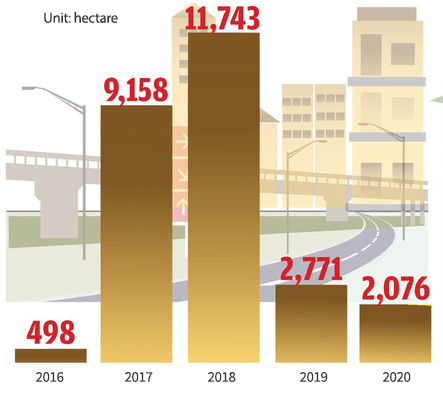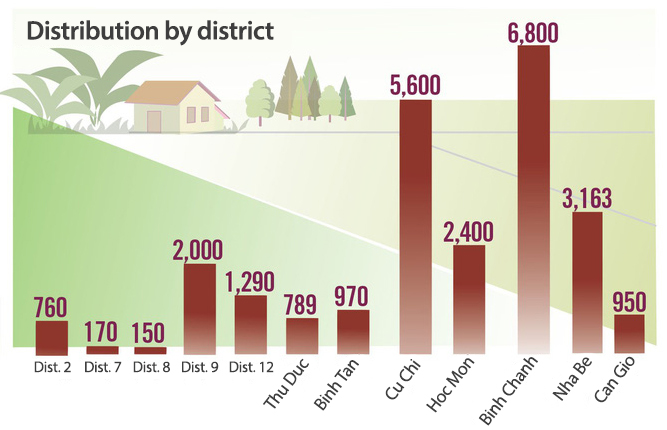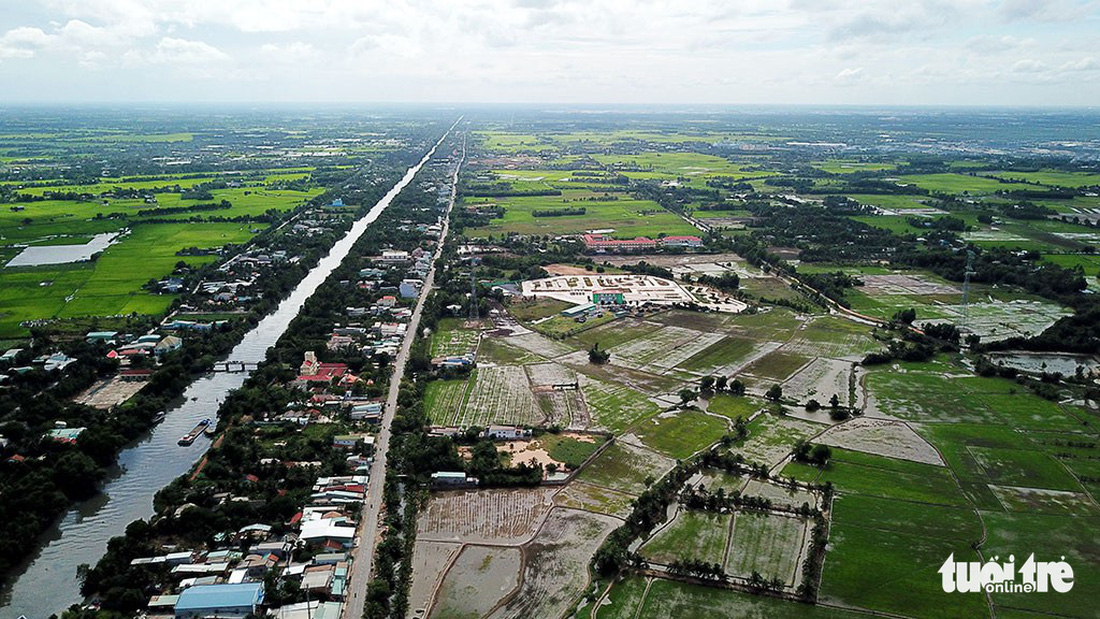Ho Chi Minh City, Vietnam’s largest city and economic hub, is expected to add a whopping amount of money to its coffers during the second phase of a major plan to repurpose a massive area of its agricultural land.
Land reserved for agricultural purposes currently makes up over 54 percent of the city’s total area, although agriculture only accounts for 0.06 percent of the southern metropolis’ gross social product, according to its chairman Nguyen Thanh Phong.
Ho Chi Minh City has 19 urban districts and only five rural districts, but the latter group constitutes 76.5 percent of the city’s total land area, he said.
Since 2010, the Vietnamese government has authorized the city to repurpose nearly 30,000 hectares of its agricultural land by the year 2020.
Up until 2015, over 3,000 hectares of such land had been repurposed, according to Nguyen Toan Thang, director of the municipal Department of Natural Resources and Environment.
The remaining over 26,000 hectares have been since 2016 gradually repurposed according to development needs of the megacity at different periods, Thang said.
“The swapping of land use for the 26,000 hectares of agricultural land is expected to bring in VND1,500 trillion [US$65.52 billion],” chairman Phong said.
 |
| An infographic illustrating the amount of agricultural land up for repurposing in Ho Chi Minh City by year between 2016 and 2020. Graphic: Tuoi Tre News |
Land eligible for the swap is mostly located in the rural district of Cu Chi, Hoc Mon, Binh Chanh, Nha Be and Can Gio, making up nearly 19,000 hectares of the total area up for repurposing.
According to director Thang, land selected for the repurposing scheme has mostly been made unsuitable for farming due to either human or natural activities.
The repurposing will be rolled out on a case-to-case basis, whereby a developer that wishes to use agricultural land for their project would be required to submit documents to city authorities for evaluation and approval, Thang said.
Not until the development plan has been approved and land clearance has been finished will the piece of land be officially repurposed, a measure that ensures no land speculation can take place, he explained.
With the exception of projects crucial to national defense or social-economic development, all land clearance must be done on the principle of mutual agreement between the land owner and project developer, Thang added.
“Projects to develop hi-tech industries that use minimal manual labors as well as innovative start-ups are prioritized in allocating repurposed agricultural land,” chairman Phong said.
 |
| An infographic illustrating the amount of agricultural land up for repurposing in Ho Chi Minh City by geographical distribution between 2016 and 2020. Graphic: Tuoi Tre News |
Like us on Facebook or follow us on Twitter to get the latest news about Vietnam!






















































